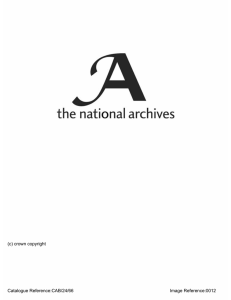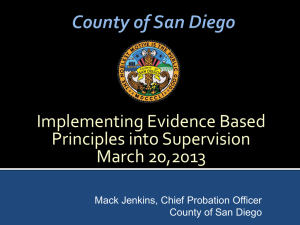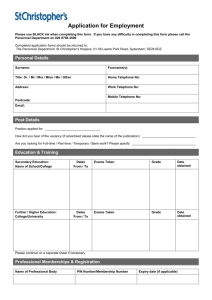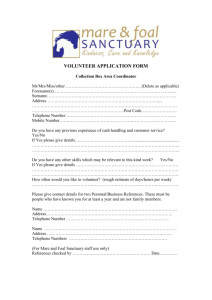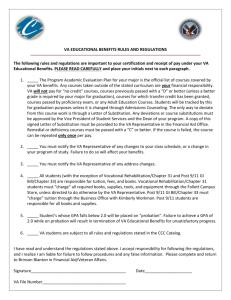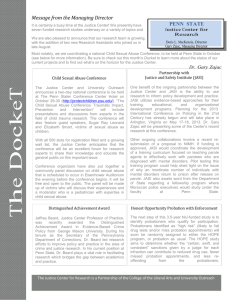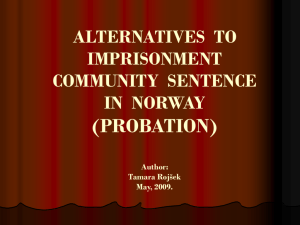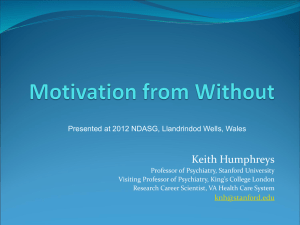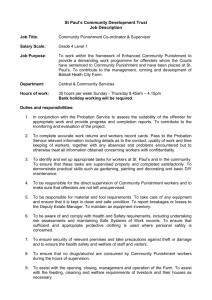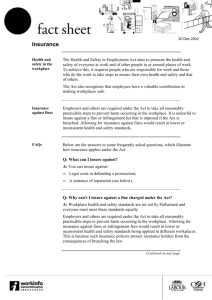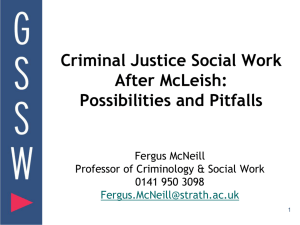WHAT DOES IT ALL COST
advertisement
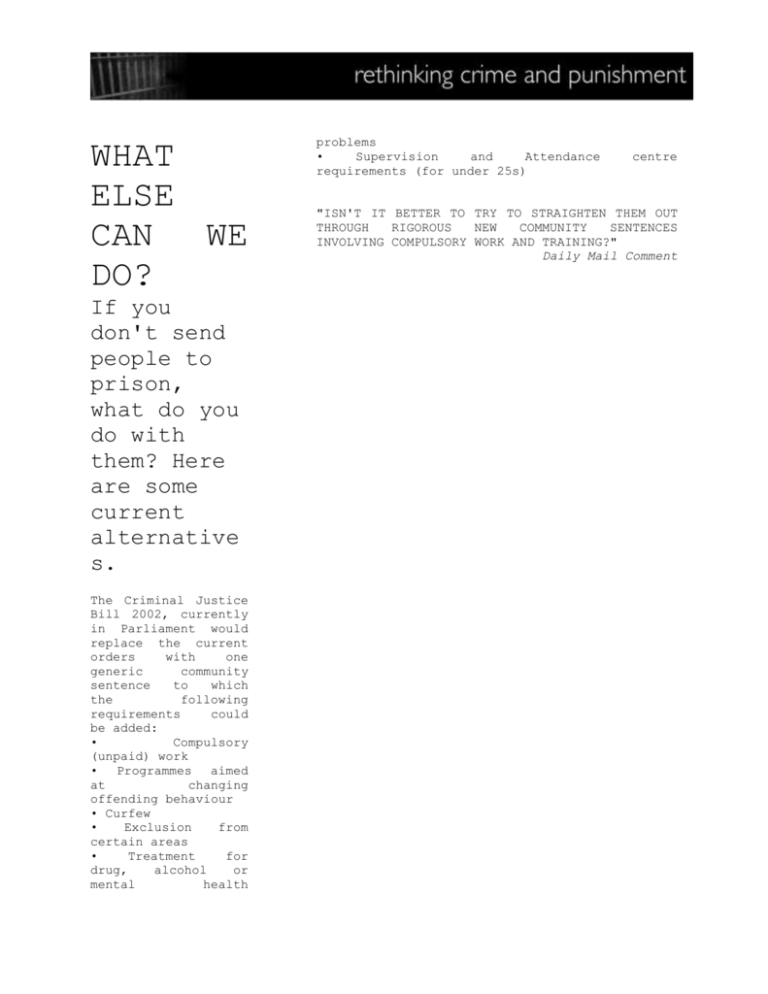
WHAT ELSE CAN WE DO? If you don't send people to prison, what do you do with them? Here are some current alternative s. The Criminal Justice Bill 2002, currently in Parliament would replace the current orders with one generic community sentence to which the following requirements could be added: • Compulsory (unpaid) work • Programmes aimed at changing offending behaviour • Curfew • Exclusion from certain areas • Treatment for drug, alcohol or mental health problems • Supervision and Attendance requirements (for under 25s) centre "ISN'T IT BETTER TO TRY TO STRAIGHTEN THEM OUT THROUGH RIGOROUS NEW COMMUNITY SENTENCES INVOLVING COMPULSORY WORK AND TRAINING?" Daily Mail Comment Community Rehabilitation Order (Formerly A Probation Order) What is it? Offenders are supervised by a probation officer and attend regular meetings, but many continue to live at home. Increasingly they also attend 'offending behaviour programmes' where they face up to the crimes they've committed, the damage they've caused and the changes they need to make to their lives. Programmes cover such topics as alcohol and driving, anger management and domestic violence. Courts can also specify additional requirements as part of the community rehabilitation order such as living in a probation hostel. How long? 6 months to 3 years. How many? About 56,000 people a year Community Punishment Order (Formerly A Community Service Order) What is it? Unpaid work for the benefit of the community. The work must be physically, emotionally or intellectually demanding. Some 8 million hours of work are contributed to local communities through these orders. Canals are dredged, graveyards are cleared, village halls are renovated, playgrounds are created, cycle paths are constructed, mosques are painted, charity shops are staffed. How long? 40 hours to 240 hours at a rate of between 5 and 21 hours a week How many? About 50,000 people a year Community Punishment And Rehabilitation Order What is it? Simply, a combination of the first two orders, that is, probation, along with community service. How long? 1 to 3 years probation with 40 to 100 hours of community punishment. How many? Around 20,000 people per year Curfew Orders With Electronic Monitoring (Or Tagging) What is it? A form of 'house arrest'. Offenders are monitored via an electronic tag on the ankle, which sends a signal through the phone line to a control centre. If the signal is broken, the control centre is immediately alerted. The court specifies which hours the offender has to be at home - between 2 and 12 hours a day. How long? Up to 6 months How many? About 2,600 people per year get sentenced. At any one time about 2,400 are under Home Detention Curfew (HDC), having been released in the last 2 months of imprisonment. Drug Treatment And Testing Order What is it? A demanding course of treatment to get offenders off drugs. Offenders are routinely tested to ensure that they are responding to the treatment. Speciallyvaluable for defendants committing crimes to raise money for drugs. How long? 6 months to three years How many? Around 3,400 people per year. 17 year-old Alan stole from his local store and sprayed graffiti on the walls. He was fined £90 and ordered to make amends to the store management. Alan met the manager, apologised and agreed to collect trolleys from around the town. Several thousand pounds worth of stray trolleys were recovered in what the store manager saw as a very positive outcome. Dave, aged 16, was convicted of using and supplying cannabis. He was given an Action Plan Order, which included an element of reparation. In particular the reparation focused on the effects of his activities on his family. Following his arrest, his parents asked him to leave home and Dave felt very strongly that he wanted to put things right between them. Mediation sessions were held between Dave and his family. He has now found a job and moved back home. ALTERNATIVE S FOR UNDER 18'S Supervision Orders/Requiremen ts What is it? An order, broadly similar to the adult community rehabilitation order. A wide range of extra conditions can be added, requiring youngsters to attend activities, do courses and behave properly. How long? Up to three years. How many? About 11,000 orders were given in 2000. Intensive Supervision And Surveillance Programmes What is it? ISSPs are available in high crime areas and targetted at persistent and serious offenders. This is a mix of high intensity education, activities, and reparation backed up by tracking or tagging. Badged as 'the most rigorous community penalty ever available for juveniles', ISSPs target youngsters who would otherwise go to jail. They have to undertake at least 25 hours per week of supervised activities and are taken back to court if they fail to comply. Early anecdotal evidence suggests it is having an impact on re-offending rates. How long? 6 months How many? 3500 per year Reparation Order Or Community Payback What is it? The youth version of community punishment orders. Can involve writing a letter of apology to the victim or repairing damage they have caused. Some orders involve direct reparation to victims, but most serve unpaid work of benefit to the local neighbourhood. How long? A maximum 24 hours unpaid work, to be done within a three month period. How many? 4,000 orders per year. Action Plan Order What is it? Offenders follow an agreed 'action plan', offering supervision combined with activities such as counselling, groupwork and specific tasks designed to make reparation to the victim or the wider community. Differs from a reparation order in that the action plan also tries to change the attitudes or circumstances of the young person. How long? A 3 month order How many? 4,500 orders per year RETHINKING… • Do the pros outweigh the cons as far as the alternatives are concerned? • Are there other factors which recommend one or the other approach?
